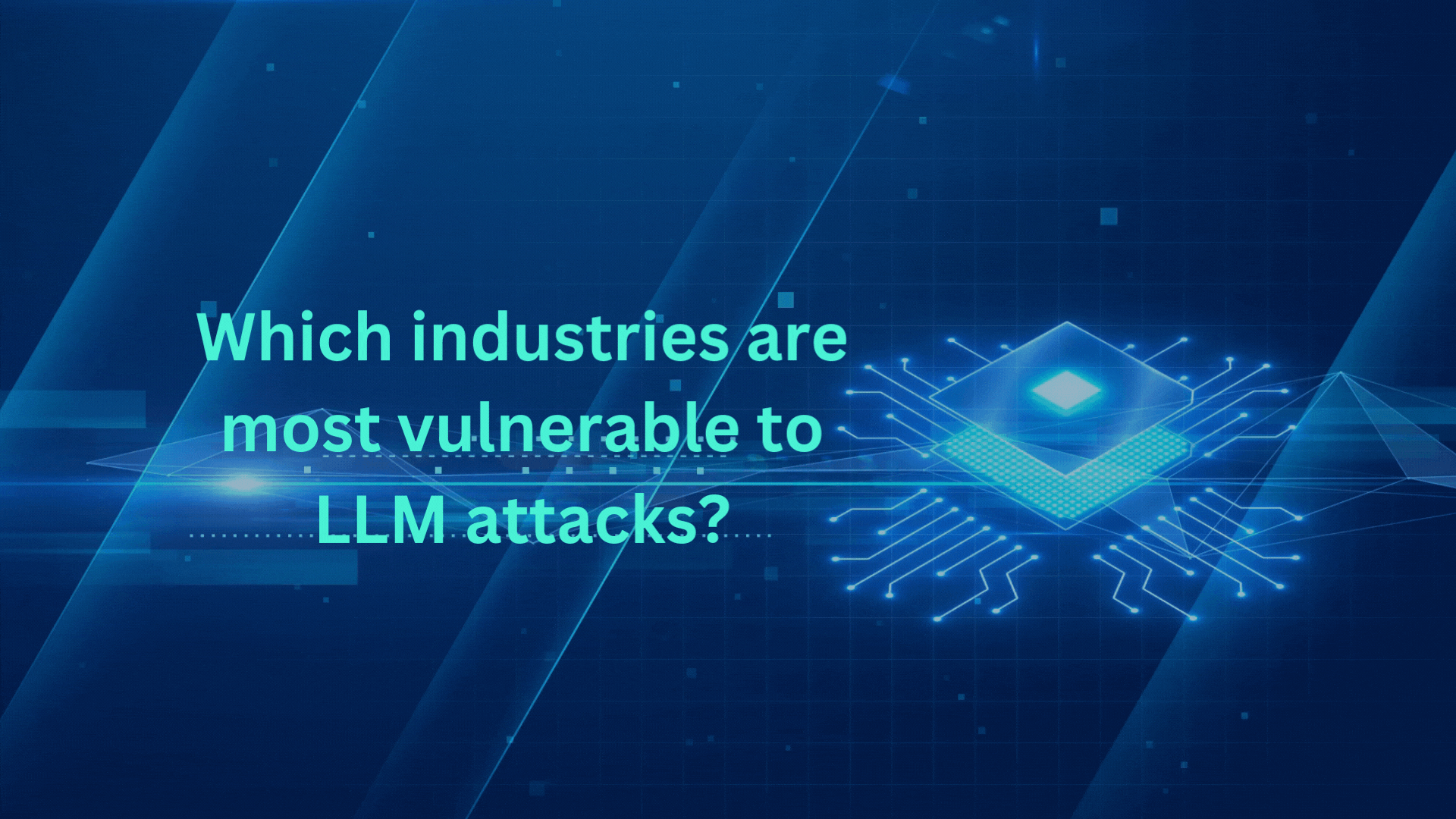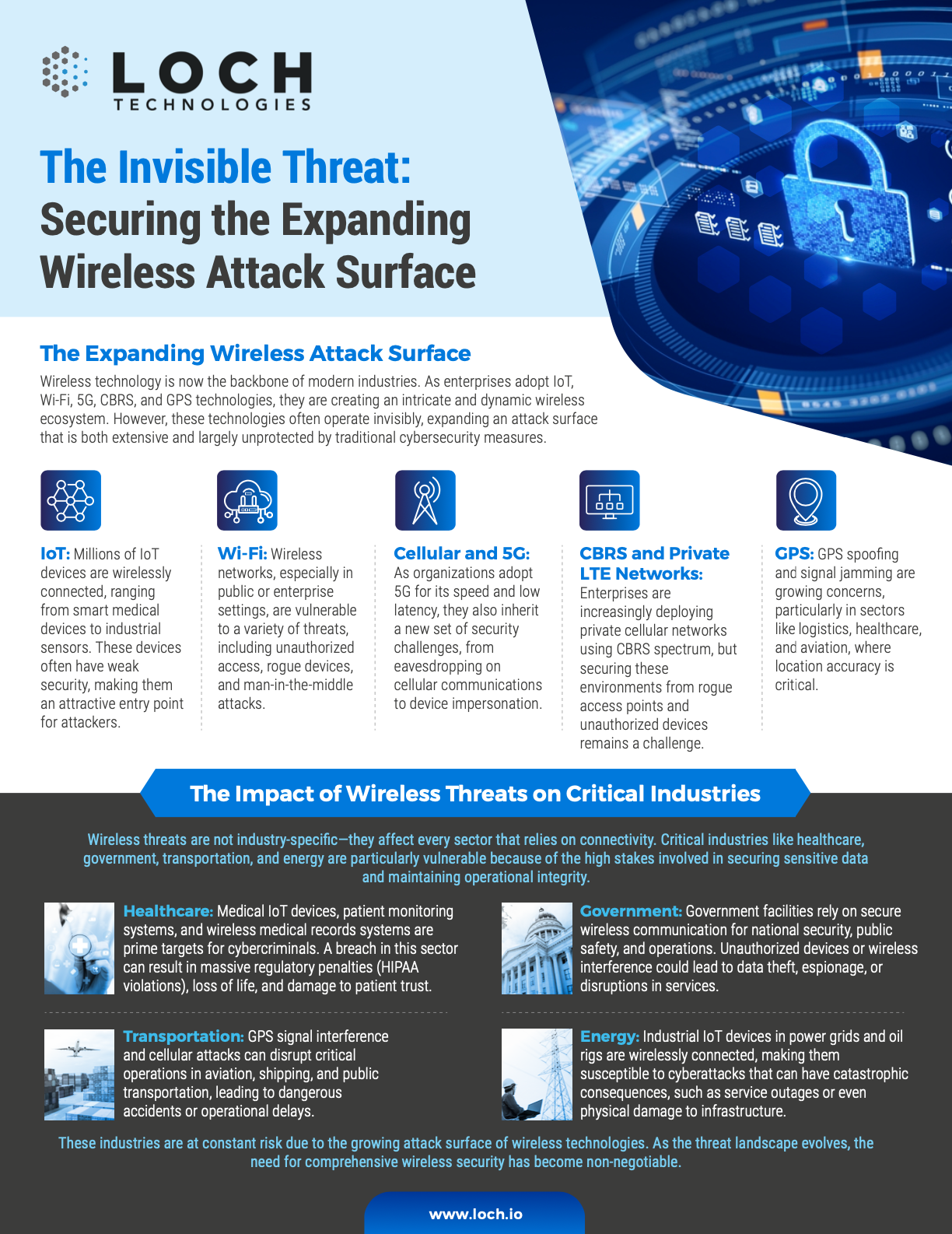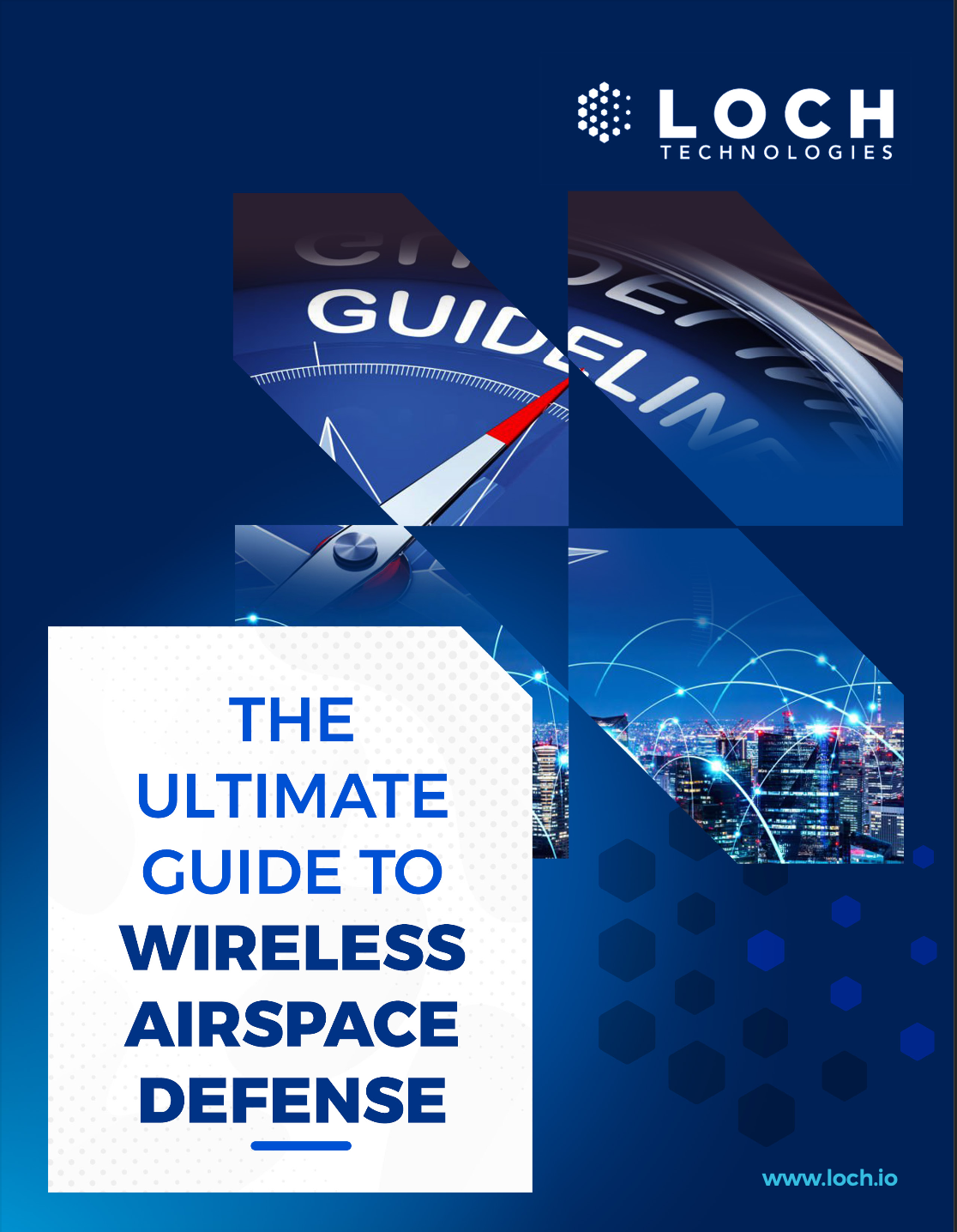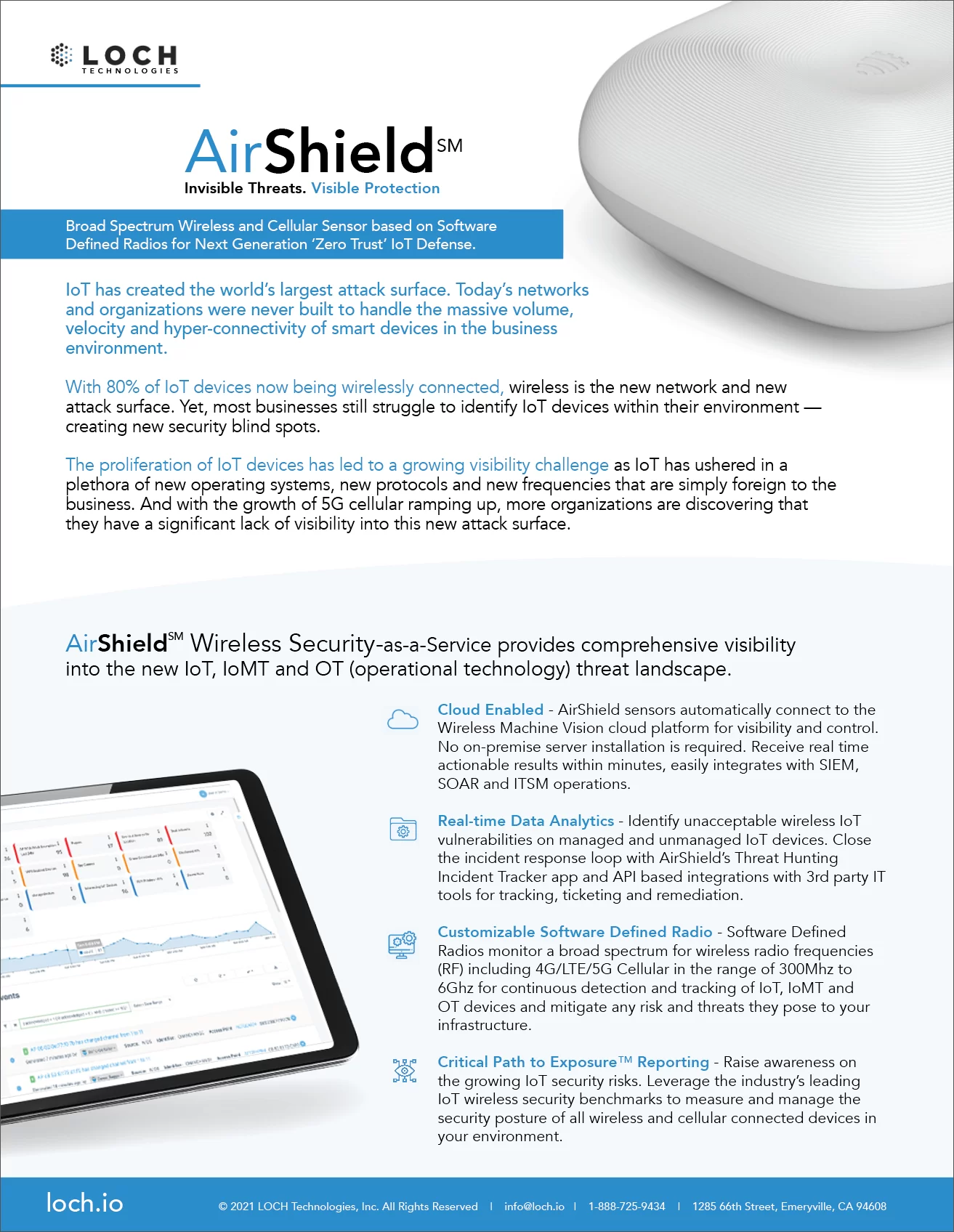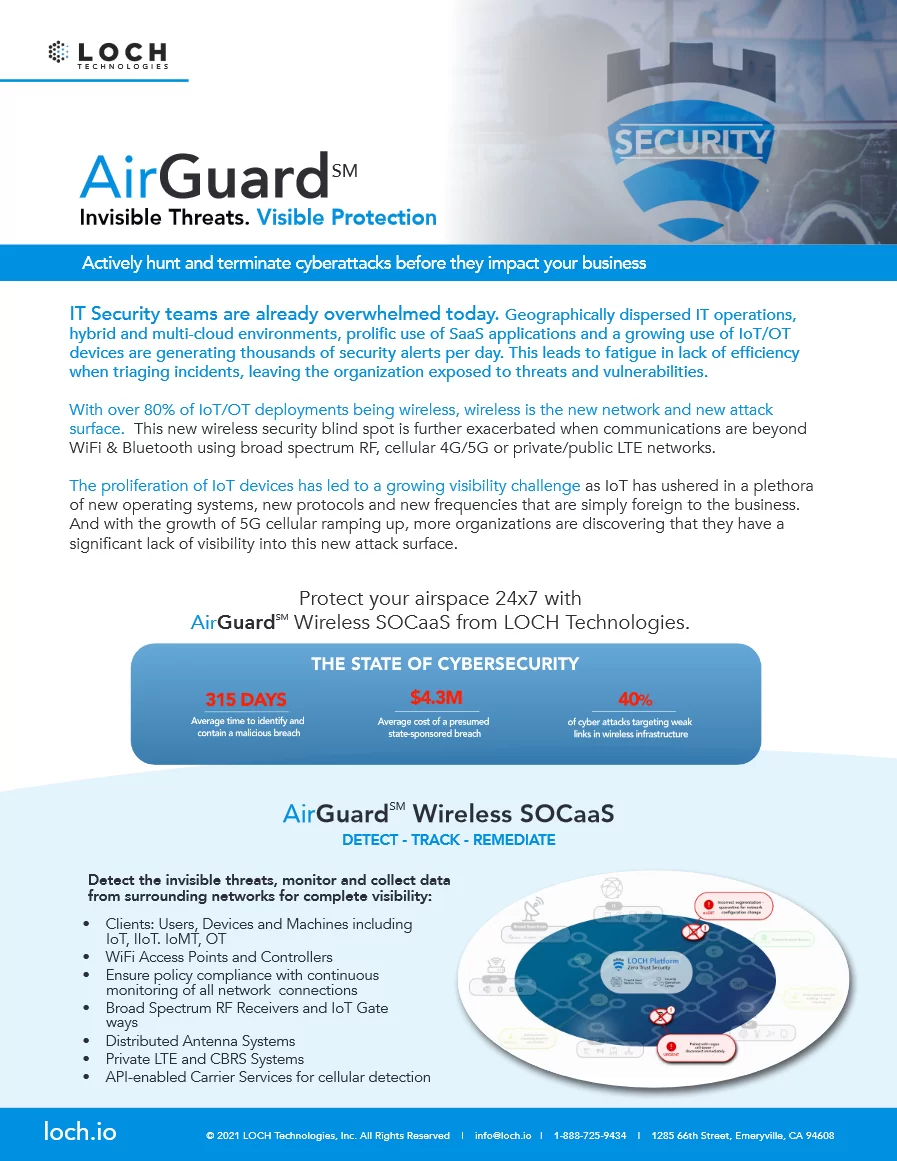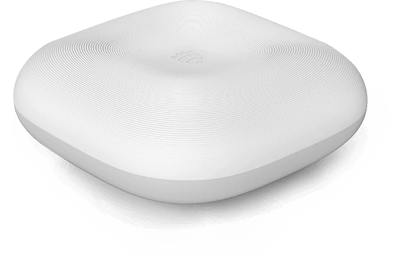
The use of wireless technologies in mining offers significant operational benefits but also introduces various risks and threats that can impact business operations.
LOCH’s Wireless Airspace Defense provides a robust solution to detect, assess, and prevent these risks, ensuring secure and reliable communications for mission-critical services.
By leveraging advanced monitoring, threat assessment, and automated response capabilities, LOCH can help mining companies protect their wireless infrastructure, maintain operational continuity, and safeguard against potential security incidents.
Wireless technologies, such as Wi-Fi, Cellular, IoT, CBRS (Citizens Broadband Radio Service), and GPS, are increasingly integrated into the mining sector to enhance operational efficiency, safety, and connectivity.
However, their use also introduces several risks and threats that could impact business operations, particularly in an environment where mission-critical services rely on stable and secure communications.
Here are the key wireless risks and threats, their potential impacts on business operations, and how LOCH's Wireless Airspace Defense can mitigate these risks:
Wireless Risks and Threats in Mining
Interference and Jamming
Wi-Fi & Cellular: Interference from other wireless devices or deliberate jamming can disrupt wireless communications, affecting the reliability of Wi-Fi and cellular networks.
CBRS: The CBRS spectrum can be susceptible to interference from other shared spectrum users or malicious jamming
GPS: GPS signals can be jammed or spoofed, leading to incorrect positioning and navigation data, which is critical for autonomous vehicles and equipment.
Unauthorized Access and Intrusions
Wi-Fi Networks: Unauthorized access to Wi-Fi networks can lead to data breaches, unauthorized control of network resources, or use of the network for malicious purposes.
IoT Devices: IoT devices in mining, such as sensors and monitoring systems, can be vulnerable to unauthorized access and control, leading to potential safety hazards or data breaches.
Cybersecurity Attacks
Man-in-the-Middle (MitM) Attacks: Intercepting communication between devices and control centers can lead to data theft or manipulation.
Malware and Ransomware: Wireless networks can be used as vectors for malware or ransomware attacks, potentially disrupting operations or leading to data loss.
Physical Threats to Wireless Infrastructure
Damage to Cellular Towers and Wi-Fi Access Points: Physical damage or sabotage to wireless infrastructure can disrupt connectivity and operational capabilities.
Signal Degradation in Harsh Environments
Environmental Factors: Dust, moisture, and physical barriers can degrade wireless signals, impacting the reliability of communication systems.

Join Us at the Security & Policing Home Office Event – Farnborough, UK, March 11th - 13th, 2025
Read More
Creating the Next Frontier in Wireless Technology: The Critical Need for Wireless Airspace Defense
Read More
The Silent Threat of Rogue Wi-Fi Networks on Navy Ships – How LOCH's AirShield Could Have Prevented a Security Breach
Read MorePotential Impacts on Business Operations
Operational Downtime
Disruptions in wireless communications can lead to operational downtime, particularly in critical areas such as equipment monitoring, control systems, and autonomous operations.
Safety Risks
Compromised wireless networks or IoT devices can lead to safety risks, including accidents caused by faulty data or unauthorized control of mining equipment.
Data Breaches & Loss of Confidential Information
Unauthorized access to wireless networks and devices can lead to data breaches, loss of sensitive information, and intellectual property theft.
Reputation Damage
Security incidents can damage the reputation of the mining company, affecting stakeholder trust and future business opportunities.
Financial Losses
Downtime, data breaches, and safety incidents can result in significant financial losses due to halted production, regulatory fines, and legal liabilities.
How LOCH’s Wireless Airspace Defense Can Mitigate Risks
Real-Time Monitoring and Detection
LOCH’s solution continuously monitors the wireless airspace to detect unauthorized devices, rogue access points, and potential interference. This real-time monitoring helps identify threats before they can cause significant damage.
Threat Assessment and Prioritization
The system can assess and categorize detected threats based on their potential impact on operations. This allows for quick prioritization and response to the most critical threats, reducing the risk of significant disruptions.
Automated Alerts and Response
Automated alerts are generated when threats are detected, allowing for immediate response actions, such as isolating compromised devices, blocking unauthorized access, or adjusting network configurations to mitigate interference.
Integration with Existing Security Systems
Adaptive Defense Mechanisms
The solution uses adaptive algorithms to adjust security measures based on the detected threats and environmental conditions, ensuring continuous protection even in dynamic and challenging mining environments.
Compliance and Reporting
LOCH’s Wireless Airspace Defense can help mining companies maintain compliance with regulatory requirements by providing detailed logs and reports of wireless activities and security incidents.
- - Detect, identify and classify all broad spectrum RF emitting devices in range
- - Device and network pairing communication map analysis and correlation
- - Risk assessment threat ranking for Zero Trust network access control
- - Mobile App for hunting rogues even if mobile
- - Wireless deep packet inspection
- - Behavioral baselining, analysis and anomaly detection/alerts
- - DVR-like capabilities for forensics, including geo-positioning
- - Carrier integration with cell. devices for anomaly detection, fraud/theft and cost management
- - List and map devices on dashboard or into SIEMs.
- - Interact with MDM and EMM assets for correlation and feedback on exceptions
- - Rectify network segmentation via interactions with SOAR, FW and/or NAC systems
- - Automate response and closure via collaboration with ITSM/ITSL and CMDBs








